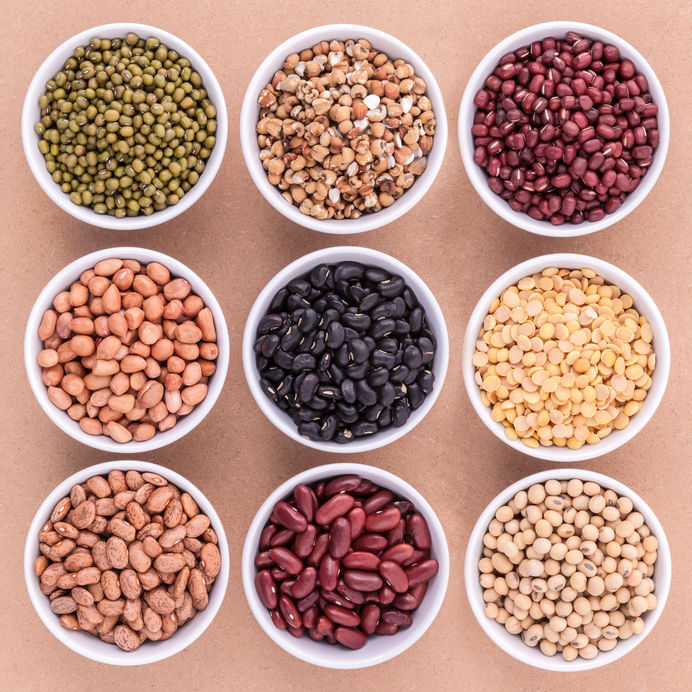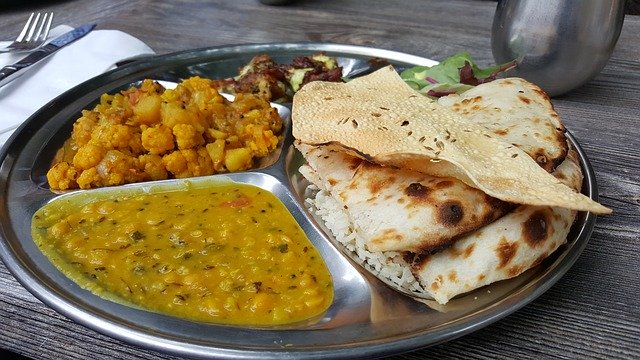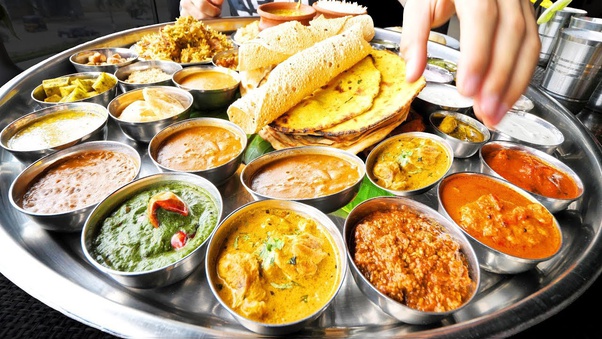This article will discuss the 3 most popular beans in India and some important bean nutrition facts. The first thing to note is that beans are brilliant! They are healthy, low cost and easy to cook with.
Bean nutrition facts
Although each bean has a slightly different composition, there are many health benefits which are common to all beans.
Beans are:
- High in fibre– fibre helps lower the risk of heart disease and colon cancer. Fibre also helps prevent constipation.
- High in protein– protein helps build muscles, bones and skin. Beans are one of the richest sources of plant protein.
- High in vitamins and minerals- including potassium and iron which support healthy blood function.
- Beans can help with weight loss- the fibre in beans help you feel full so you will eat less.
- Low in fat.
- High in starchy carbohydrates- this means the rise in blood sugar is more controlled which is beneficial to people with type 2 diabetes
Note- Although beans generally have a good iron content, they are also high in phytates which can reduce the absorption of iron. The best way to absorb the most iron from your food is by consuming iron rich sources of food (red meat, shellfish, pumpkin seeds) with sources high in vitamin C (citrus fruits, broccoli, red bell peppers).
Next, we will discuss the individual beans, looking at nutrition per 100g
Kidney beans
Nutrition per 100g of boiled kidney beans
- Calories: 127
- Protein: 8.7 grams
- Carbs: 22.8 grams
- Sugar: 0.3 grams
- Fibre: 6.4 grams
- Fat: 0.5 grams
Kidney beans contain alpha-galactosides a type of prebiotic. Read this article to understand more about prebiotics and probiotics. These prebiotics are fermented by beneficial bacteria. These healthy fibres result in the formation of short chain fatty acids that can improve the health of your colon and reduce the risk of colon cancer.
The red skin of kidney beans is high in anthocyanins. These plant compounds have been shown to possess antidiabetic, anti-cancer, anti-inflammatory and cardiovascular disease prevention benefits.
Are there any downside to kidney beans?
Raw kidney beans contain high amounts of a toxic protein called lectin. This can cause stomach aches, vomiting and in severe cases death. According to the NHS follow the three steps below to safely prepare kidney beans-
- Soak the dried beans in water for at least 12 hours
- Drain and rinse the beans, then cover them with fresh water
- Boil them vigorously for at least 10 minutes, then simmer the beans for around 45 to 60 minutes to make them tender
As mentioned earlier kidney beans contain alpha-galactosides. These compounds can cause flatulence, bloating and flare ups in people with IBS.
Chickpeas
Nutrition per 100g of boiled chickpeas
- Calories: 180
- Protein: 9 grams
- Carbs: 30 grams
- Sugar: 0 grams
- Fibre: 8 grams
- Fat: 3 grams
Chickpeas are an excellent choice for those looking to maintain the recommended amount of protein consumption but without eating meat. They are a good source of protein and adaptable to many different recipes and styles of cooking. Chickpeas also contain 8g of fibre per 100g, and we previously mentioned fibre has many benefits. Read this article to find out about the benefits of fibre in more detail.
There are 105mg of calcium in 100g of chickpeas. Calcium is crucial to maintain strong and healthy teeth and bones.
Chickpeas also contain choline; this is a nutrient that helps support the healthy functioning of the nervous system and body’s metabolism.
Are there any downside to chickpeas?
One thing to watch out for is that if you are deciding to use canned chickpeas or any canned beans, sometimes there are large amounts of salt added to the can. Consuming too much salt can have negative health effects such as high blood pressure and an increased risk of cardiovascular disease.
Finally, you should never consume raw chickpeas as, similar to kidney beans they contain toxins. Chickpeas, along with many other beans, should be cooked thoroughly before consumption.

Mung beans
Nutrition per 100g of boiled mung beans
- Calories: 105
- Protein: 7 grams
- Carbs: 19 grams
- Sugar: 2 grams
- Fibre: 8 grams
- Fat: 0 grams
Mung beans are rich in essential amino acids. Read this article to discover how people consuming a plant-based diet may struggle to consume adequate amounts of essential amino acids. Mung beans are also high in potassium, magnesium and fibre and these three nutrients have been shown to reduce blood pressure.
One of the key health benefits of consuming mung beans is that they are packed full of folate. Folate is essential for women of childbearing age as it prevents spinal bifida in babies. One cup of cooked mung beans provides 80% of the recommended daily intake of folate. Pregnant woman should not eat raw or sprouted beans as they may contain harmful bacteria to the unborn child.
Mung beans are higher in natural sugar so have a slightly sweeter taste. This can add great variety to the flavours of your meal and snack.
Are sprouted mung beans healthier for you?
Mung beans are one of the beans you can eat raw, however this isn’t without risk. Sprouted mung beans are beans that have been placed in conditions suitable for them to begin germination/ sprouting. It is believed by many that sprouted beans are a healthier option. Sprouted mung beans are high in fibre. Fibre is known to keep you fuller for longer as it slows digestion. Fibre can also promote weight loss and reduce spikes in blood sugar.
As with kidney beans Mung beans contain antinutrients such as phytates which can reduce the absorption of minerals such as iron and magnesium. When the mung beans are allowed to sprout before being consumed the levels of phytates drop. This means not only do they contain higher levels of some key vitamins and minerals, but these nutrients are also better absorbed by the body.
However, it is important to note that the conditions needed to successfully sprout mung beans, are water and moist conditions. These conditions are also suitable for salmonella, listeria and E. coli, bacteria (that can cause food borne illness (to grow in).
Although sprouted beans can be a good choice, eating regular portions of ‘normal’ beans will be just as beneficial as part of a healthy balanced diet.
Conclusion
We hope you have learnt some bean nutrition facts. Overall beans are a very healthy, and excellent cheap source of many nutrients. It is crucial to prepare them the correct way for safety. If you don’t like beans, then you can try to introduce them slowly into your diet. Try them in small amounts in different recipes, drink more water after eating beans and introduce them to your children (safely) early on.
Studies discussed in the article
Title- Anthocyanidins and anthocyanins: coloured pigments as food, pharmaceutical ingredients, and the potential health benefits
Authors- Hock Eng Khoo, Azrina Azlan, Sou Teng Tang, and See Meng Lim
Link- https://www.ncbi.nlm.nih.gov/pmc/articles/PMC5613902/
Title-Health Benefits of Plant-Based Nutrition: Focus on Beans in Cardiometabolic Diseases
Authors- Amy P. Mullins and Bahram H. Arjmandi
Link- https://www.ncbi.nlm.nih.gov/pmc/articles/PMC7915747/




1 Comment
[…] Beans, peas, lentils […]